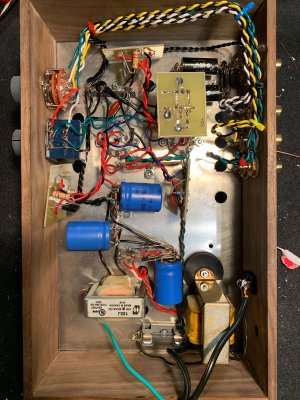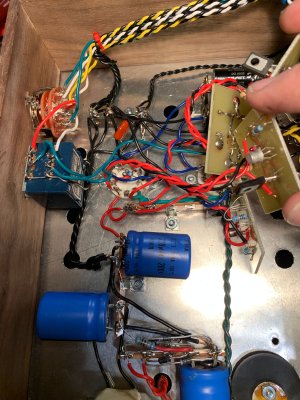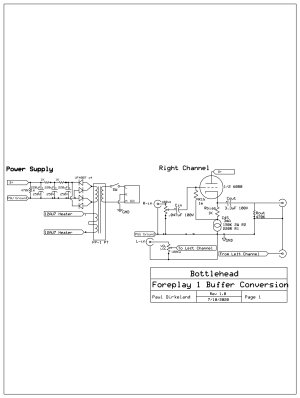Alright, while I'm waiting for those attenuators, a little update. I've been reading whatever I can find on grounding and hum issues, including this page
http://cognitivevent.com/av_hum.html, which has some specific info about the Foreplay. I haven't had any big "ah hah" moments about my problem in particular but it's been good to delve more deeply into the principles. I tore down all the ground and signal wiring and rebuilt it based on what I've gathered. Pics attached. The first is a general overview with the VA/CF boards in their normal spots, the second two are closer views of the two sides of the thing with the boards moved out the way.
- Twisted pairs for the input signal wires, with grounds split off from the signal wires near the source selector switch and attached to a terminal where the volume pot ground is also attached.
- I debated about where to ground the output jacks, since the original FP has their first ground at the output jack grounds and then on to the volume pots, but I also read in several places that the output jacks should be grounded as close to the cathodes grounds of the first stage as possible. I decided on the latter, so ran a twisted pair from the output jack grounds to another terminal on the same strip. The cathode and heater center tap grounds also go to this terminal.
- The grounds for the VA/CF boards go to the third terminal on this strip.
- I then have a 18awg twisted trio from these terminals to the ground of the third filter cap.
- Shortest possible 18awg wires run from the negative terminals of the second and third filter caps to back to the negative terminal of the first filter cap.
- I've tried connecting the PS to the chassis at the third filter cap ground, first filter cap ground, and not at all. I've ended up leaving it connected to the third filter cap ground.
- Lastly, since I've got those attenuators on the way and Mr Joppa mentioned my attenuating resistors possibly affecting the treble, I removed those and the 10ks between output and ground and reinstalled 470k resistors between output and ground.
- For S&Gs I put rubber washers between the PT and the chassis plate.
- Also tried adding a .1uF cap with a 10k resistor across it between the third filter cap ground and the chassis, based on the grounding schematic on the page linked above. I confess I don't understand exactly what that's supposed to do, but I had the parts and it seemed worth trying.
I
think this all amounts to a star-of-stars type scheme, with all the runs kept as short as they can be, given the configuration.
The result? The hum is about the same as it was before the re-wiring. It's definitely louder than with the attenuating resistors. It's possibly a bit louder in one channel, but it's been like that all along.
But at least my wiring is a bit more respectable now!
I hope the attenuators bring the hum down to an inaudible level, but I'd love to be able to attain a silent build of the circuit without them. This being such an extreme scenario, it seems like an excellent opportunity to fully explore the mysteries of hum and noise.





